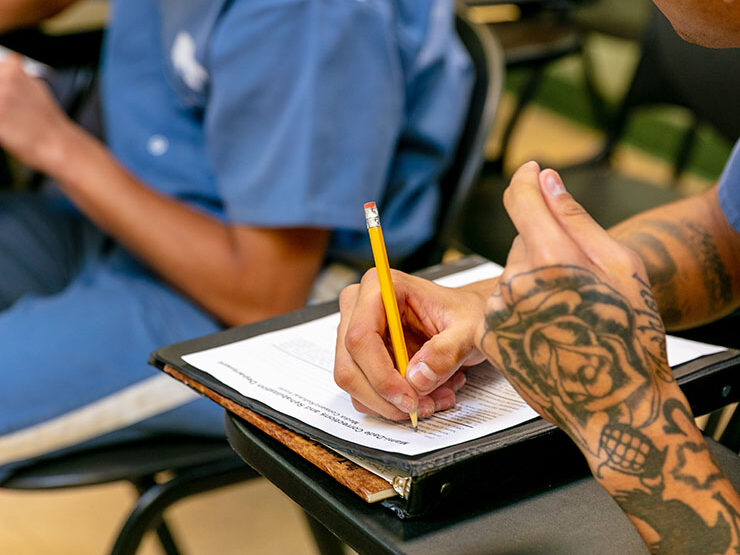Think back to the last time you did laundry. How carefully did you measure out the detergent? Did you scrutinize the marks on the cap, or did you just eyeball it and hope for the best?
If you’re like most people, you didn’t bother to measure it closely at all. Even if you wanted to, you can’t easily read the indicators on the cap. That’s not accidental—it’s more profitable for laundry detergent manufacturers when you use too much of their product. What’s wasteful for you means more money for them. As Matt McFarland notes in the Washington Post, there’s just no incentive for them to improve the design.
No incentive, that is, as long their design stays centered on profit. But when design is centered on people, everything changes.
What is human-centered design?
Human-centered design is based on the idea that the primary purpose of things is to serve people. The way we make those things, then, should start from a place of deep understanding and empathy for the people who ultimately use them. The use of the term “things” here is intentionally vague; this concept applies not only to products from pencils to rockets, but also to solutions and services.
From that simple conceit, the human-centered design philosophy suggests a specific approach to problem solving. Here are the basic steps:
1. Develop a deep understanding of the people you serve.
During this phase of the human-centered design process, spend time researching, interviewing, and learning from the people you’re seeking to serve. Who are they, and what do they need? What are the problems they’re facing? And how will the thing you’re creating provide a solution?
2. Generate lots of ideas.
The research phase will spark numerous ideas about how to solve these problems you’ve identified. Capture them all. During this generation phase, there are no bad ideas, just many different approaches. Share them with your team and start zeroing in on the ones you want to develop.
3. Build prototypes and refine them.
Think of this as the audition phase. Create and test prototypes to see which work best and which ones your test customers respond most favorably to. In truth, this is a continuation of the first step, using prototypes to gather specific, actionable information to improve the next iteration.
4. Launch your new “thing”—and keep refining it.
After enough iterations based on user feedback, you’ll have a viable version of your new product, service, or solution to launch in the broader market. Keep getting feedback and use that to hone and improve your product and its market share.
How does design thinking differ from human-centered design?
Design thinking is closely related to human-centered design, but while some people use the terms interchangeably, that’s not entirely accurate.
If human-centered design is the process outlined above, design thinking refers to the specific skills of designers and builders on your team working to solve a problem. For instance, if you’re trying to build a better laundry detergent cap, you need designers who can balance the needs of your customers against the feasibility of potential solutions. While it might be dandy to ideate an artificially intelligent android that can perfectly measure detergent, that’s probably a bit out of scope.
Big ideas are great. But to build a successful new product, service, or solution, it’s important that designers, providers, and engineers maintain a practical understanding of feasibility while maintaining empathy for customers. Design thinking describes a way to balance the two.
Still not sure what to make of all this? We can help. Design thinking is a core part of the way we help organizations like yours solve problems. If you’re ready to try a new approach that uses empathy and iteration to deliver solutions, we’d love to be part of it.
Successfully transforming your business begins with a focus on people.
Share:







